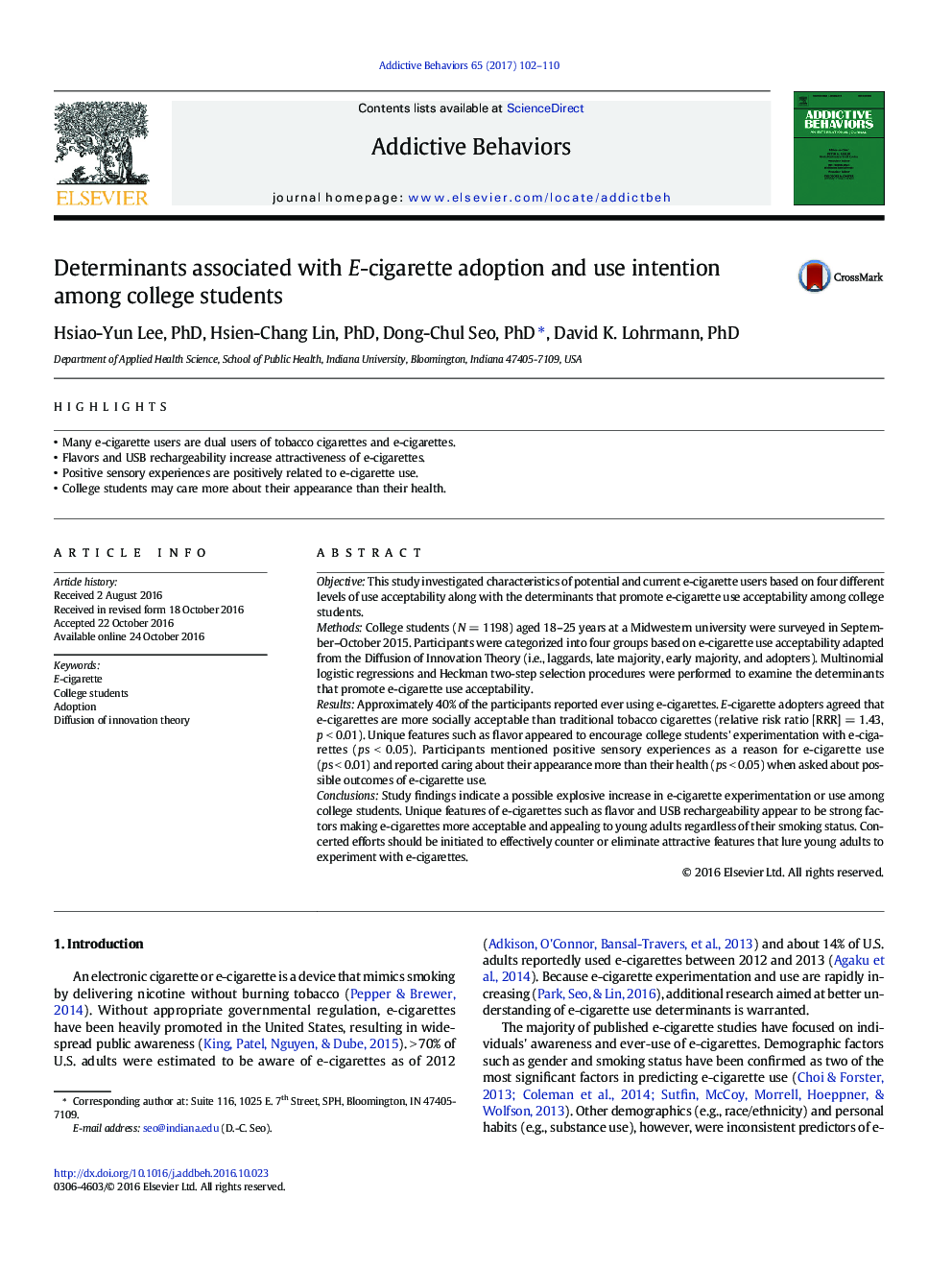| Article ID | Journal | Published Year | Pages | File Type |
|---|---|---|---|---|
| 5037896 | Addictive Behaviors | 2017 | 9 Pages |
â¢Many e-cigarette users are dual users of tobacco cigarettes and e-cigarettes.â¢Flavors and USB rechargeability increase attractiveness of e-cigarettes.â¢Positive sensory experiences are positively related to e-cigarette use.â¢College students may care more about their appearance than their health.
ObjectiveThis study investigated characteristics of potential and current e-cigarette users based on four different levels of use acceptability along with the determinants that promote e-cigarette use acceptability among college students.MethodsCollege students (N = 1198) aged 18-25 years at a Midwestern university were surveyed in September-October 2015. Participants were categorized into four groups based on e-cigarette use acceptability adapted from the Diffusion of Innovation Theory (i.e., laggards, late majority, early majority, and adopters). Multinomial logistic regressions and Heckman two-step selection procedures were performed to examine the determinants that promote e-cigarette use acceptability.ResultsApproximately 40% of the participants reported ever using e-cigarettes. E-cigarette adopters agreed that e-cigarettes are more socially acceptable than traditional tobacco cigarettes (relative risk ratio [RRR] = 1.43, p < 0.01). Unique features such as flavor appeared to encourage college students' experimentation with e-cigarettes (ps < 0.05). Participants mentioned positive sensory experiences as a reason for e-cigarette use (ps < 0.01) and reported caring about their appearance more than their health (ps < 0.05) when asked about possible outcomes of e-cigarette use.ConclusionsStudy findings indicate a possible explosive increase in e-cigarette experimentation or use among college students. Unique features of e-cigarettes such as flavor and USB rechargeability appear to be strong factors making e-cigarettes more acceptable and appealing to young adults regardless of their smoking status. Concerted efforts should be initiated to effectively counter or eliminate attractive features that lure young adults to experiment with e-cigarettes.
